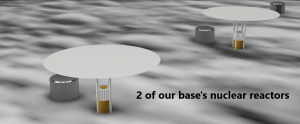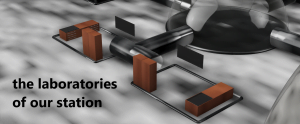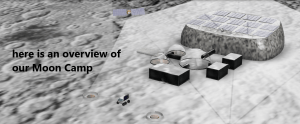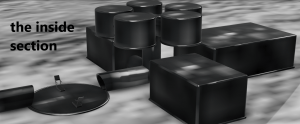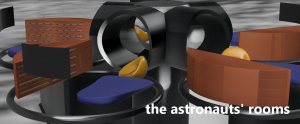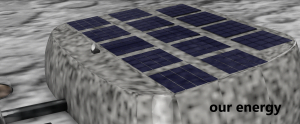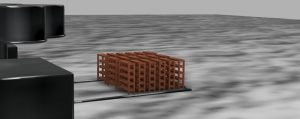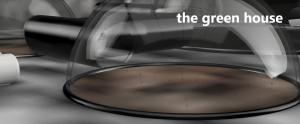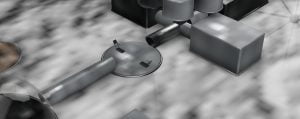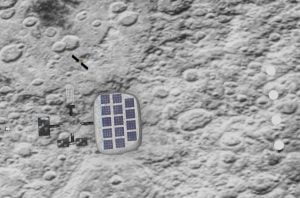Moon Camp Pioneers Gallery 2020-2021
In Moon Camp Pioneers each team’s mission is to 3D design a complete Moon Camp using Fusion 360. They also have to explain how they will use local resources, protect astronauts from the dangerous of space and describe the living and working facilities.
Team: Team EOS
Liceo Scientifico G. Ulivi Parma Italy 17
External viewer for 3d project
|
Project description
The EOS Base is built to be a human second-approach permanent settlement on the Lunar surface. It takes its name from Eos, the Greek goddess of the dawn. Our Moon Base is designed to host up to five astronauts, each one with a specific different role. We have planned to build the station in the Lunar South Pole, due to its great advantages: light, temperature and exploration possibilities. To maximise the living and research possibilities, we will build the first part of the Base inside the Malapert Mountain, where there will be the guests’ personal rooms, the warehouse, and other high value zones. The second part of the Station will be built outside the mountain, so the astronauts can work, grow plants and organise missions in an “open” environment made out mainly by couples of Aerogels, a revolutionary material that also allows Sun light to “enter” without dangers for humans. The main goal of this settlement will be to prove that medium and long-term human life on the Moon is possible. Moreover, the base would be also used as a fundamental scientific research outpost; the astronauts will study the Lunar surface and try to grow plants or other types of food, collect water and produce energy. We then strongly believe that this will be an opportunity for scholars, astronauts and even countries to cooperate to reach the same objective, bringing scientific and space research on a brand-new level. |
|||
|
Where do you want to build your Moon Camp?
We think the best setting in place for our camp would be the Malapert Mountain, close to the Shackleton crater and not far from the Lunar South Pole; we have chosen this position because scientists are now certain that the two big craters of Shackleton and Shoemaker contain high quantities of ice, which could be used for the production of drinking water and breathable air. It also allows the Base to be directly Enlighted all day long and it is characterised by a regular and stable temperature (around 260 K) during the whole day. The Malapert Mountain shows a large and smooth area for landings and surface operations (or explorations). In addition, the Base strategic position will make it easier to establish solid communications between Earth and Moon. All these elements will make much easier for a human to live well in this special environment. How do you plan to build your Moon Camp? Describe the techniques and materials you would use.
The idea is at first to build part of the Base on Earth using modular modules, as the ones we can see on the ISS. These modules would be brought to the Lunar surface, along with special rovers, which will first dig tunnels in the Malaport mountain’s wall and then carry inside it the previously assembled modules. The modules, now covered by the Lunar rock, will also be protected by the beta cloth, a type of flame-retardant silica fiber tissue, which has the ability to withstand atomic oxygen. As to outdoor spaces, in addition, we have planned to build semi-spherical domes, which will be covered and protected by aerogel, a very precious material, characterised by being transparent, inflatable, protective from solar radiations, thermically insulator, durable, flexible and light and composed mainly by air. The environment on the Moon is very dangerous for the astronauts. Explain how your Moon Camp will protect them.
As one of the astronauts’ main danger is represented by the exposition to radiations, the crew will live half of their day under cover; the modules under the hill will be covered by regolith, which will naturally protect the astronauts. During the rest of the day, for example when having to work in the greenhouses, the astronauts will be also protected by the aerogel, the material of which the domes are made. This material can protect them from radiation and also let the sun’s rays pass trought it. In addition, because of its resistance and its spherical shape, aerogel can protect the crew from meteorites. In case of fire or depressurization, each module is separated from each other, and the problem can be isolated very easily thanks to the “airlock chambers”. Each module is then covered by betacloth, which will act as thermal insulator. Explain how your Moon Camp will provide the astronauts with:
|
|||
|
Water
|
Food
|
Electricity
|
Air
|
|
Water is present on the Lunar surface, but we are not sure in what form: might be iced in craters or mixed with rocks. Because of this, in the first times it will be necessary to bring water from Earth or recycle urine and condensation, as it happens on the ISS nowadays. Then, in a second phase, water will be taken as ice from the bottom of some craters, brought to the Base and melted to enable its use. If the water would be found as mixed to rocks, we would purify ice first to make usable water. |
Astronauts will carefully follow a diet that will ensure the correct intake of vitamins and minerals, maintaining the balance between lightness, flexibility and high nutritional values. Foods such as sweets or fruit can be taken in their natural form, while others will require the addition of water because they will be dehydrated or freeze-dried. The astronauts’ focus will be also on finding alternatives to this system, creating small vegetable gardens on site, run by the hydroponic technique. In this case lettuce, spinach, carrots, tomatoes, onions, radishes and peppers are foods identified as a possible future cosmic crop. |
We would use two different power sources: solar panels and nuclear power. This system will allow the Station to be continuously powered, even if a fault occurs. Nuclear power in space is no longer a mirage and has been used for rovers and satellites for many years. The EOS base will require 4 reactors, each with a production capacity of 10.000 W, expecting a medium usage of 40.000 W for 5 astronauts. Reactors should be similar to the ones of the NASA’s “Kilopower Project”, that has already demonstrated the usability of nuclear energy for short- and medium-term space missions. |
Oxygen will be mainly provided by metalysis, using a method called “molten salt electrolysis”. The process involves placing the powdered regolith (made up of 45% oxygen by weight), in a mesh-lined basket with molten calcium chloride salt serving as an electrolyte, heated to 950°C. Using filters, the air will be purified and through the ventilation system of the base the oxygen will be delivered to every part of the settlement. Moreover, a small part of the oxygen will be provided by the photosynthesis of plants in the greenhouses. |
|
Explain what would be the main purpose of your Moon Camp (for example: commercial, scientific, and/or tourist purposes).
The Base is planned to be a second-phase human permanent settlement on the Moon. This has never been done before, so its main purpose will be to study the lunar environment and soil in a revolutionary way, doing experiments and analysis. Moreover, thanks to the 5 people living there continuously for several months, the Base will also represent an important site where to learn more and more about the human’s body reactions to these peculiar conditions. As it is easy to understand, then, our Base will have a fundamental medical objective, and that’s why we will have two doctors-astronauts onboard all time. The last but not least purpose is the one of Lunar outpost: this base will be useful for future explorations in the deep space and to make the launch of human missions easier (like the ones to Mars in the next future). |
|||
|
Describe a day on the Moon for your Moon Camp astronaut crew.
The base is built for 5 astronauts. The crew will have two different shifts; if anything happens while three astronauts are sleeping, there will always be two astronauts awake. These people will be waking up at 6 a.m. in the morning to start their day in the best possible way. After doing the compulsory workout for at least an hour, in order to keep their muscles fit, they will have breakfast, wash the dishes, have a shower and get ready for the day. Then they will have to work for 4 hours until 13 a.m., when they will have lunch. The 3 astronauts will restart working after lunch for 5 hours until 7 p.m., when they’ll have a meeting with the earth’s control centre for establishing work, problems, and communicating everything that needs to be reported. At 8 p.m., the crew will have dinner and then free-time, until 10 p.m. when they must go to sleep. The work is specialized and different for each astronaut: each of them will have to complete the tasks in which they are specialized and then having to deal with the base daily maintenance. The botanic scientist will have to work on the greenhouses, growing plants and food for the rest of the crew. The biologist will be exploring the moon surface and carrying out some experiments to get more information about our satellite. The engineer will work on the base, fixing the problems and working with microgravity. The two doctors will have to keep up with the rest of the crew in case of problems. Moreover, they will be carrying out medical experiments exploiting microgravity, like doing researches on the cures for degenerative diseases and see if it is possible to give birth and raise a child on planets other than terrestrial ones. The astronauts will be able to explore and navigate on the moon surface using the rovers and the lunar vehicles. |
|||


